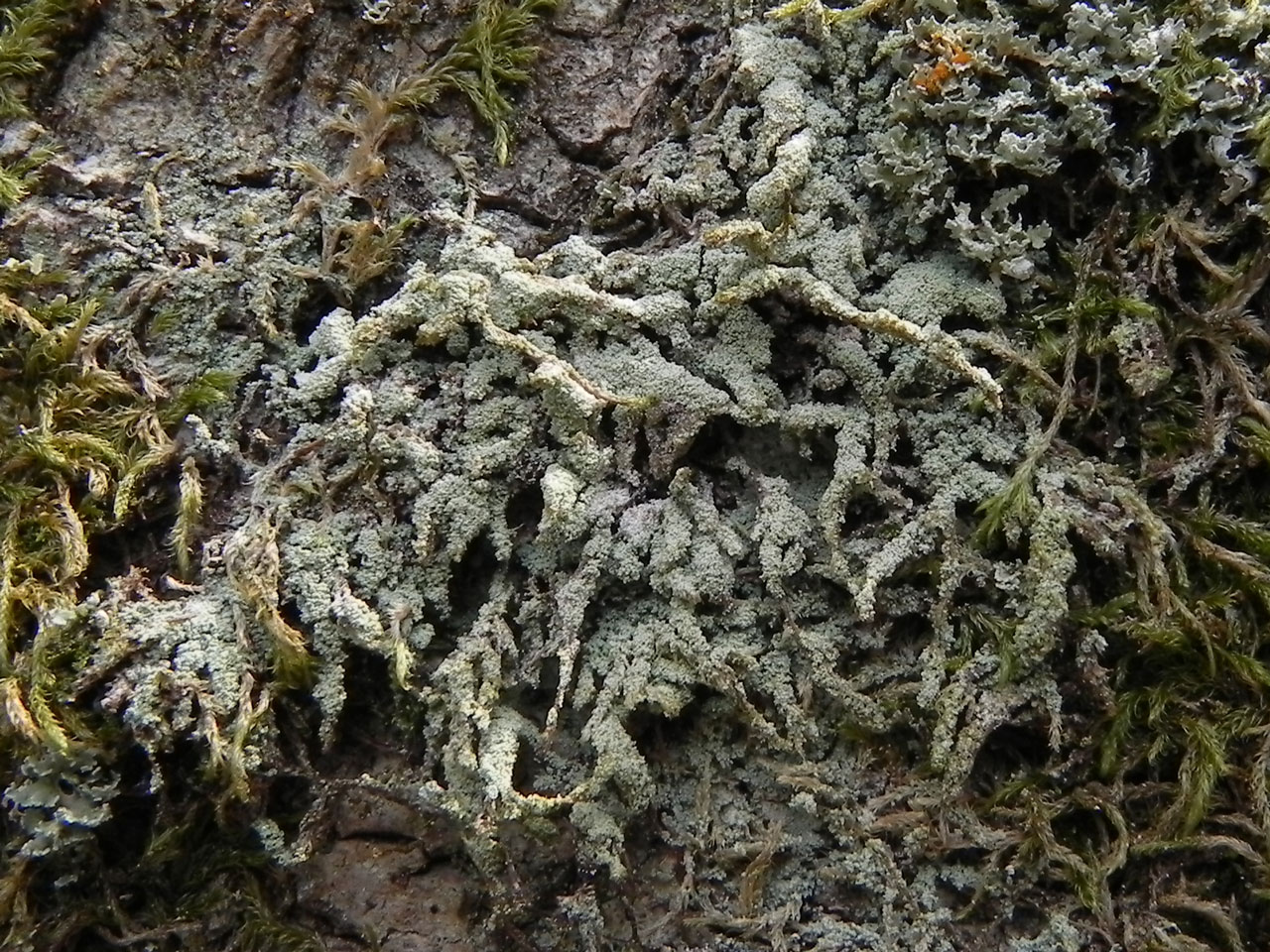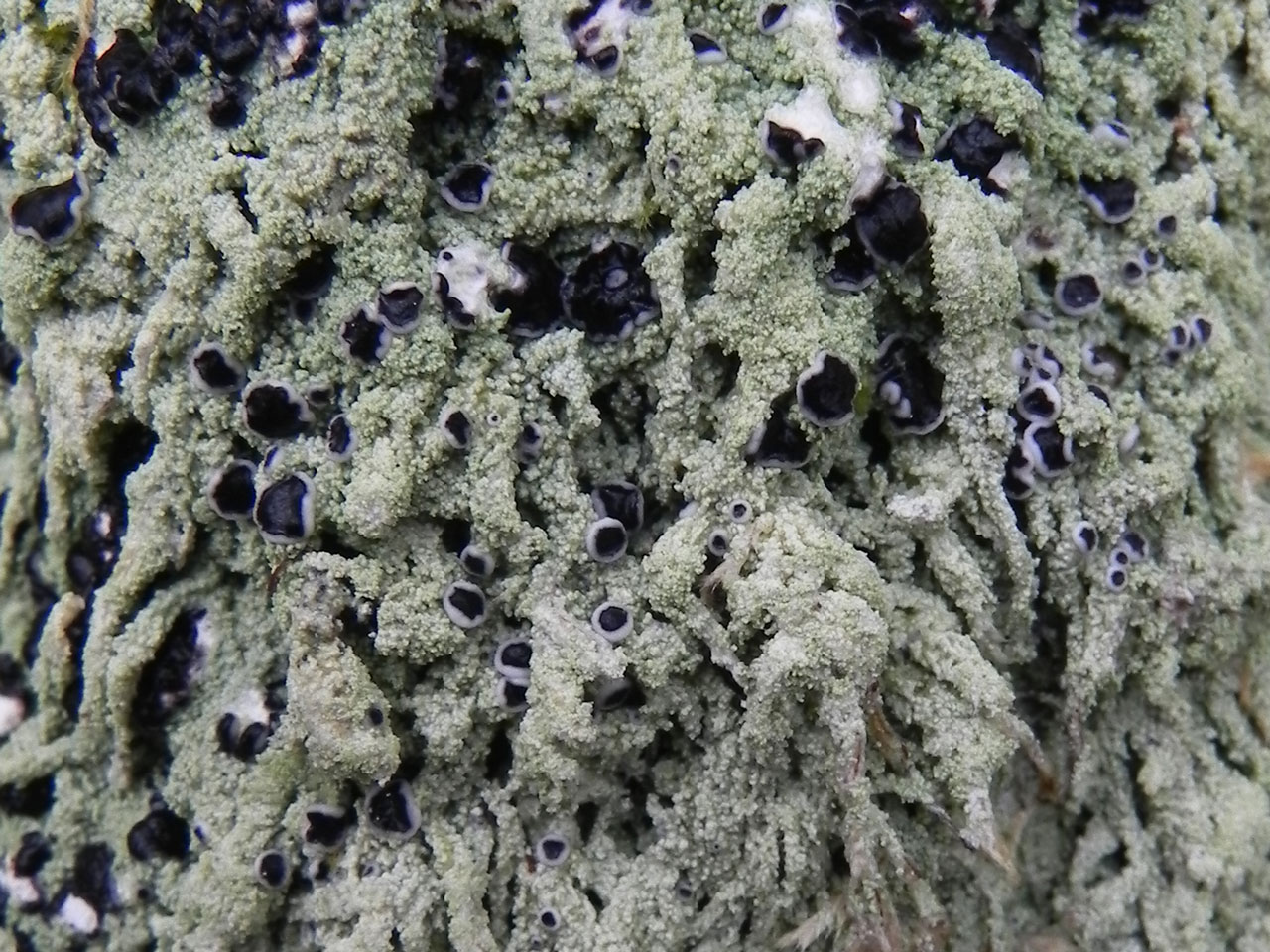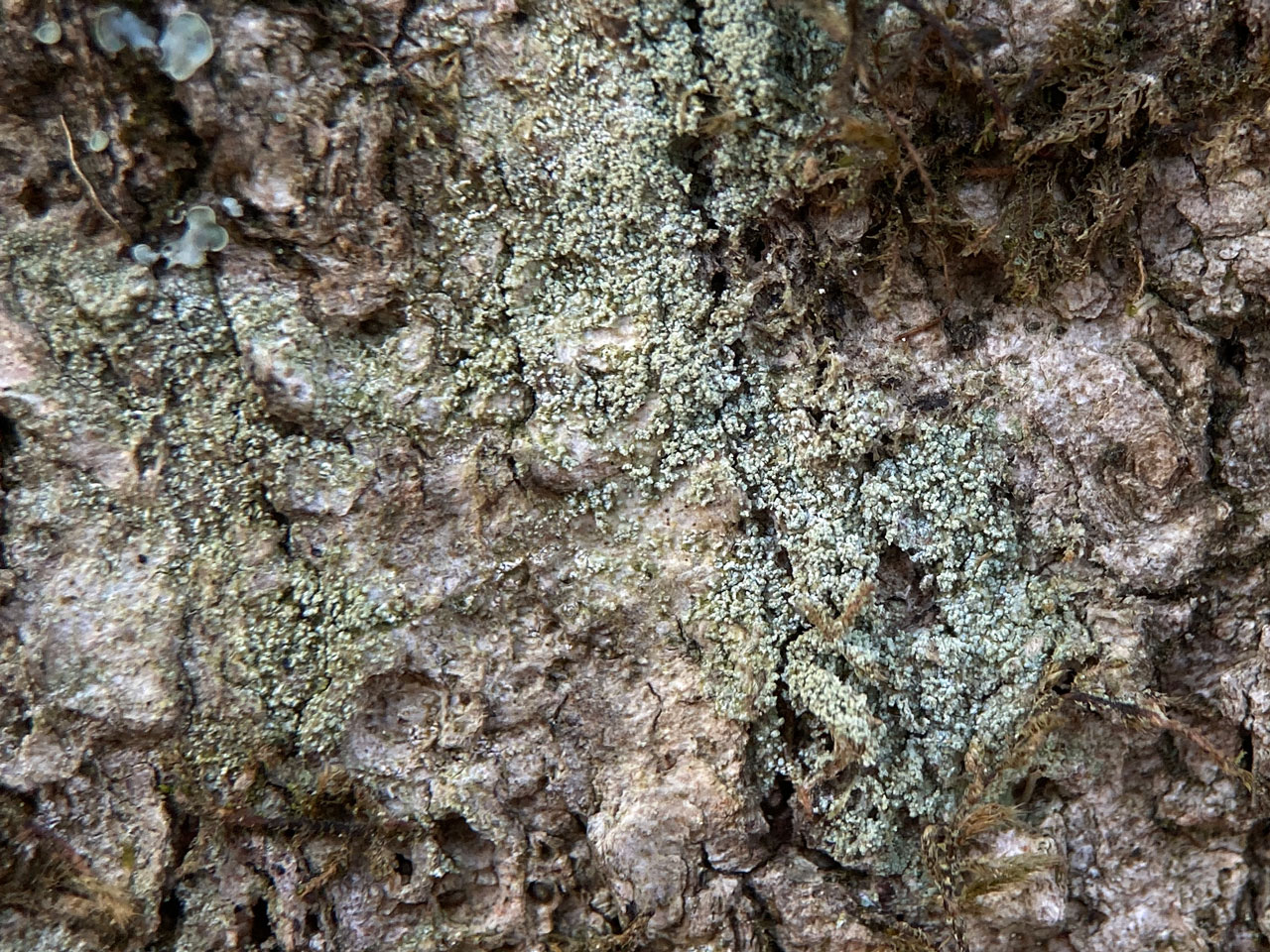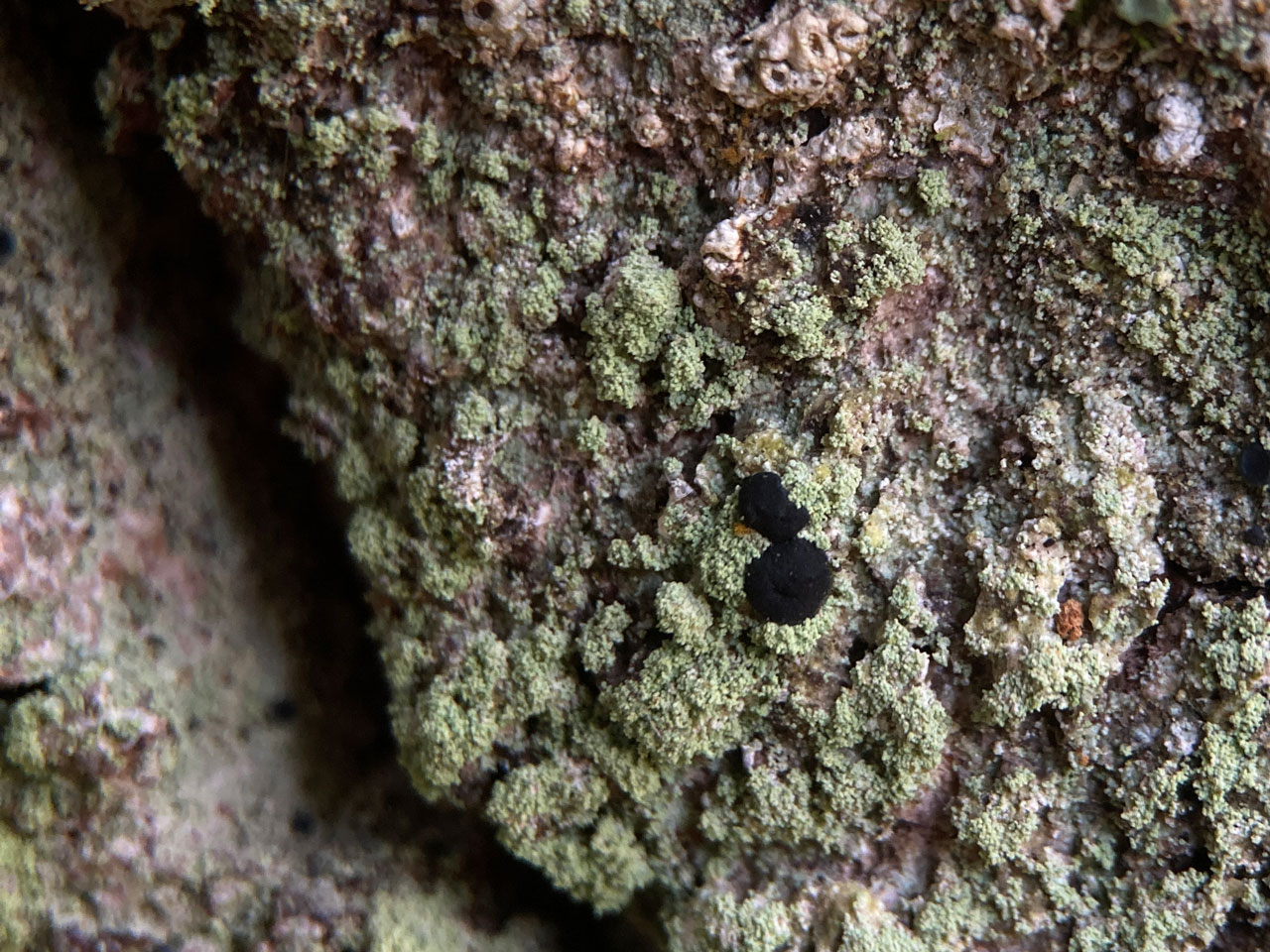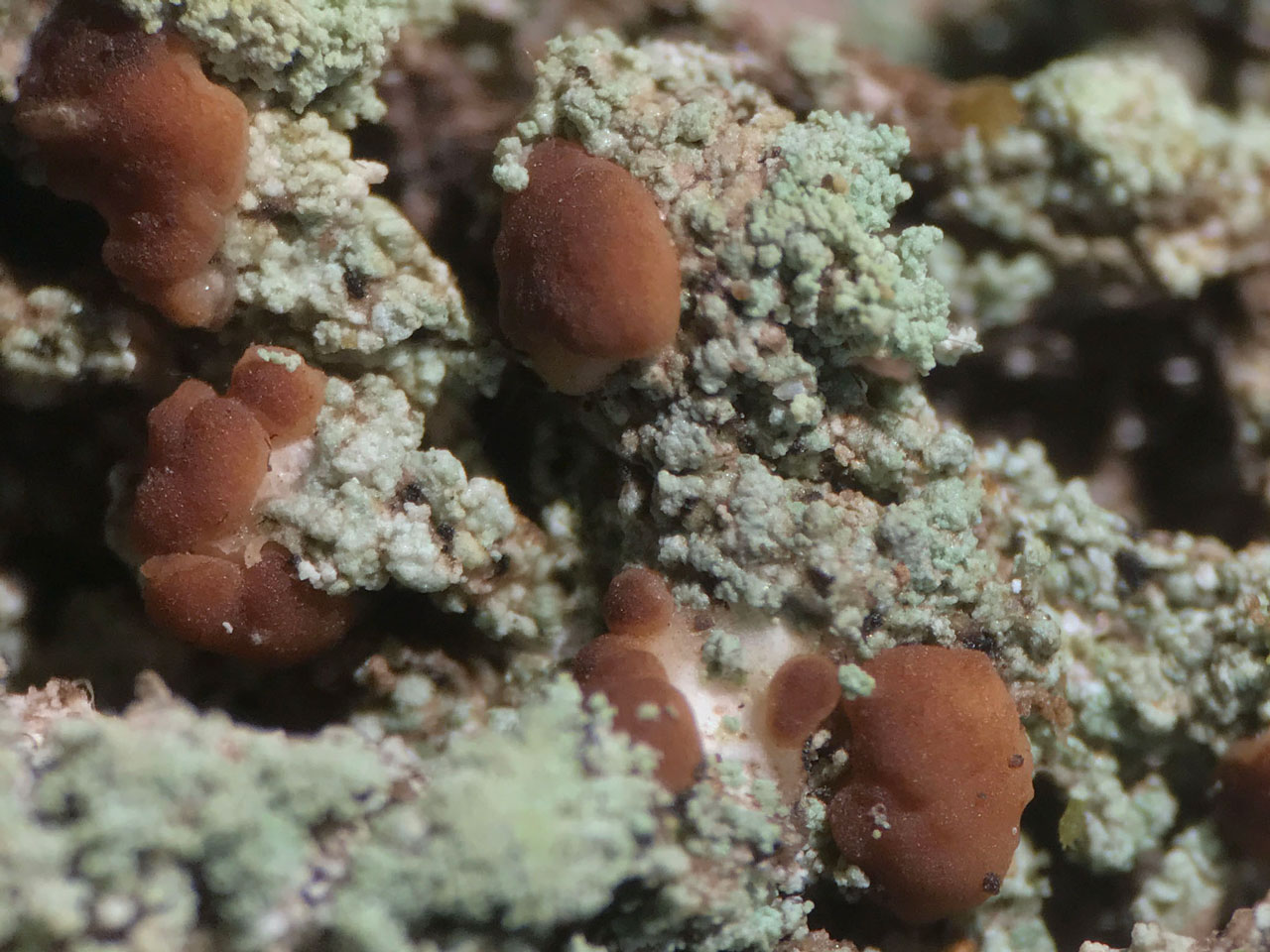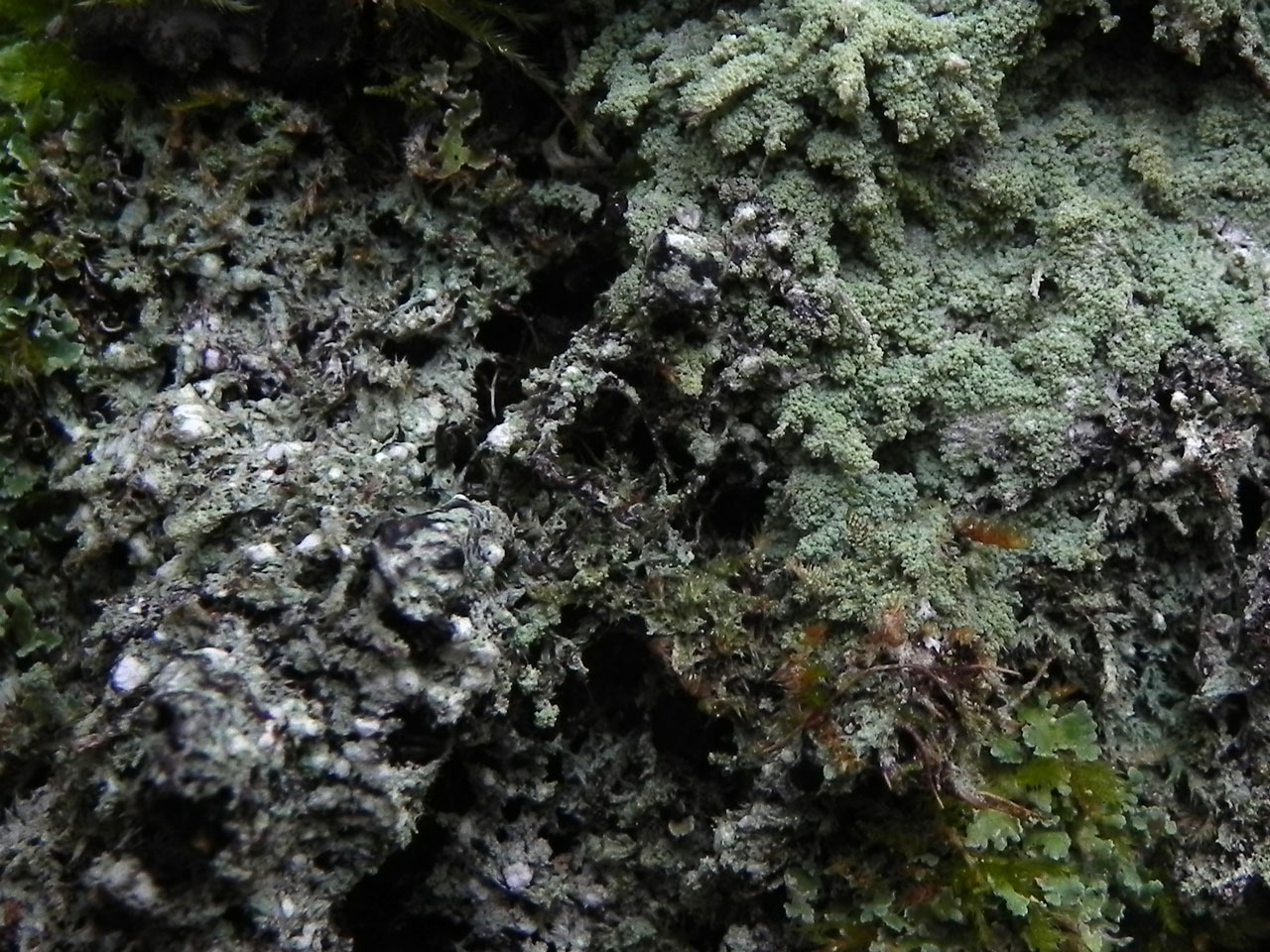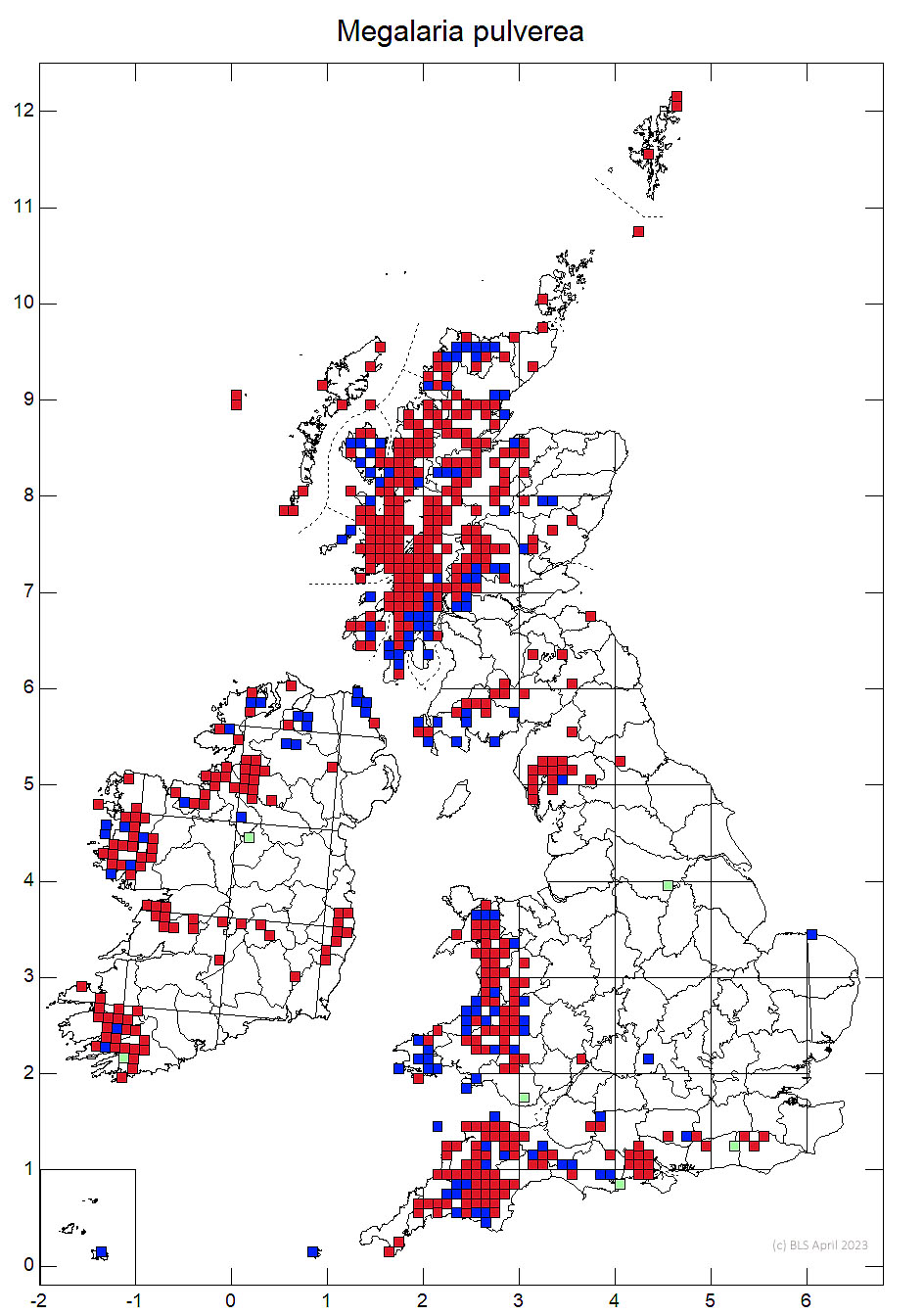A very distinctive lichen of acid bark in oceanic woods when fertile, with dark disks with pale margins on a grey-white to glaucous sorediate crust. It is usually found sterile, however, when it is more difficult to separate from several other woodland species, particularly including Megalospora tuberculosa and Phyllopsora rosei. Combinations of form, spot tests and colour will help separate these species. Particularly the presence of atranorin in M. pulverea detected by the K/UV(dry)+ bright yellow spot test separates this lichen from the most similar species.
Thallus effuse, thin, ± evanescent; soralia large, effuse, grey-white to glaucous, granular, sometimes coalescing to form an almost continuous sorediate crust; soralia-soredia grey-green, bluish or yellowish green, 40–100 μm diam.; photobiont cells 5–14 μm diam. Apothecia 0.5–2.2 mm diam., rare, flat, sometimes convex and contorted, black; true exciple distinct, colourless or pale brownish in the upper part, sometimes concolorous with the epithecium at the upper outer edge, the hyphae coherent in K, 2–3 μm diam., each with a thick gel coat; epithecium dark green, K+ green intensifying, N+ red, sometimes with additional violet K+ green patches; hymenium 45–75 μm tall, colourless; hypothecium (and exciple) colourless, or pale brown in uppermost and/or lowermost parts, with minute, colourless crystals that do not dissolve in K or N; paraphyses 1.8–2 (–2.5) μm diam., the apices clavate, 3–4 μm diam., surrounded by dark pigment. Asci Bacidia- or Biatora-type, the apical cushion narrow, ± surrounded by a thin, dark blue zone. Ascospores 10–16 (–19) × 4.5–6.5 μm, broadly to fusiform-ellipsoidal, the walls rather thick; epispore absent. Pycnidia not seen. Thallus K+ yellow, K/UV (dry)+ bright yellow, Pd+ red, often Pd– or faint yellow, UV– (atranorin, zeorin and usually fumarprotocetraric acid).
Usually sterile, when it can be confused with Megalospora tuberculosa, Phyllopsora rosei or thickly sorediate morphs of Violella fucata. The Pd– forms are especially difficult to separate from Megalospora tuberculosa, which contains usnic acid but not atranorin. The new K/UV+ spot test for atranorin, however, solves this problem; M. pulverea reacts K/UV (dry)+ bright yellow, even on problematic Pd– thalli, while Megalospora tuberculosa thalli react K/UV (dry)–.
A recently collected specimen with an identical thallus and spot tests but with orange-brown apothecia, with the dark green epithecial pigment replaced by an orange-brown pigment, and significantly larger spores, 17–22 × 7–8 μm, may be an overlooked and normally sterile cryptic taxon.
Host to undidentified species of Capronia and Merismatium as well as Spirographa fusisporella s. lat.
On generally rather acidic, mossy trunks (rarely branches) in old, moist woodlands, occasionally on mossy rocks and soil (especially near the coast), or old Calluna.

Western and southern parts of Britain and western Ireland, extending east locally.
Cannon, P., Aptroot, A., Coppins, B., Ertz, D., Sanderson, N., Simkin, J. & Wolseley, P. (2021). Arthoniales: Roccellaceae, including the genera Cresponea, Dendrographa, Dirina, Enterographa, Gyrographa, Lecanactis, Pseudoschismatomma, Psoronactis, Roccella, Schismatomma and Syncesia. Revisions of British and Irish Lichens 16: 1-22.
Text by Neil A Sanderson, based on Cannon et al (2021)
